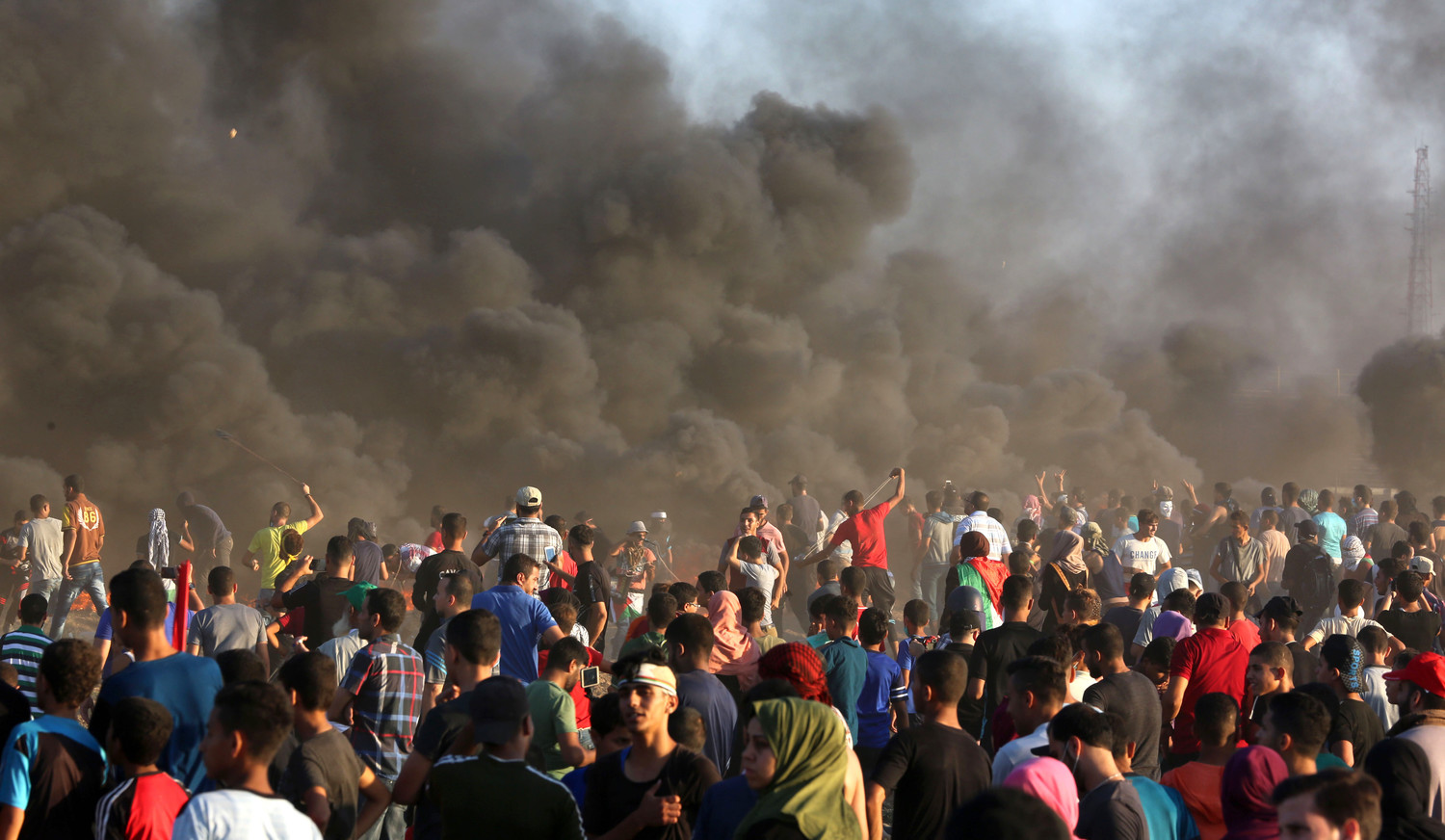NY Times ends year with an epic Israel smear
The New York Times’ 4,700-word story on the death of a young Gazan woman during border riots in June 2018 is a powerful reminder of the depth and breadth of bias at the paper.
The hagiographic Dec. 30 account spans a remarkable three and a half pages, tracing Rouzan al-Najjar’s personal life and sad end. Yet it manages, in all the words and images (and online videos), not to report the nature of the violence in which she was entangled, nor of the murderous and implacable hatred of Israel fueling it.
The rioters hurling fire bombs, rocks, burning tires and flaming kites — some embellished with swastikas — and ripping down the fence wherever they can are not termed “rioters” by the Times, but “protesters.” The rants of “death to Israel” and threats that the “army of Muhammad” is coming delivered by Hamas leader Ismail Haniyeh to chanting mobs are excluded.
The riots are termed instead a “kind of nationalist circus,” which they may be, but genocidal bigotry fuels this circus and its frenzy week after week to overrun the fence and invade Israel.
The Times has a longstanding aversion to reporting straight-on demonization of the Jewish people, so there is also no mention of Hamas leader Yahya Sinwar vowing last April before the death of the young medic: “We will take down the border, and we will tear out their hearts from their bodies.”
The effort broadly to obscure Palestinian violence against Israel also includes blurring the most serious threat: the chronic rocket and missile fire from Gaza into Israel. The Times’ David Halbfinger and his colleagues relay that the young medic had hoped to study medicine abroad, observing, “But then came the rockets, the blockade, the wars.”
The blockade and wars resulted from thousands of rockets and missiles from Gaza. The onslaught has also necessitated bomb shelters, and concrete-protected schools and public spaces throughout Israel’s south; safe rooms in every home; and elaborate anti-missile systems to protect against the bombardments. No mention is made of the millions of Israelis who live under missile threat from Gaza.
2018, the year of the weekly “March of Return” riots along the Gaza border, saw a sharp upsurge of rockets, with 1,000 fired into Israel. In comparison, a total of 71 were fired in the previous three years.
Halbfinger likewise wrote: “Before 2005, Gaza residents could work in Israel. But rocket attacks and bombings after the Second Intifada erupted in 2000 prompted Israel to cordon off the strip and eventually abandon its settlements there.”
“Rocket attacks and bombings”? By whom? From where?
And this tiny, odd reference to modern Gaza history, including an Israeli withdrawal that might have allowed better lives for Palestinians but for the tyranny of Hamas, is all there is in the 4,700 words.
In the Times’ rendition, it’s trigger-happy Israelis who are the issue. They’re depicted as crouching in the dunes and shooting harmless protesters. A huge two-page diagram depicts sniper sight-lines striking al-Najjar.
And this, too, is deceptive — the characterization of al-Najjar’s actual fate. For 80 percent of the story she’s reported to have been killed by a bullet “fired by an Israeli sniper into a crowd,” implying she’s struck directly by rifle shot. And there’s commentary on targeting protesters and rules of engagement.
Only near the end do readers learn the woman was killed when a bullet struck the ground a distance from her and ricocheted, with fragments striking three people, the others injured but not fatally. That is, despite the elaborate diagrams, online videos and poignant portrait, al-Najjar wasn’t targeted by a sniper but was victim of an unintentional ricochet.
Though the Times’ story is exceptional in its dramatic length, its tropes featuring romanticized Palestinian victims of hard-bitten Israelis have long graced the pages of the newspaper. In myriad similar stories, one-dimensional, victimized Palestinians with no agency of their own are acted upon by Israelis. Their families and communities are opaque and unknown, defined only in relation to Israel and only as victims.
Halbfinger, who is relatively new to the post, also offers up a thread-worn insight regarding the death of the medic: “It also shows how each side is locked into a seemingly unending and insolvable cycle of violence.”
What is shown is the Times drifting ever further into a seemingly unending cycle of bias where Israel and Jews are concerned, as recent weeks underscore. An uproar over the paper just weeks ago featuring an anti-Semitic book recommended by Alice Walker has fueled intensifying dissatisfaction with the publication.
The continuous hectoring of Israel, in a region where vast cruelties have been inflicted on peoples who need the light of journalistic attention but are ignored, can be weighed in the context of the Times’ greatest past professional failure.
“The century’s bitterest journalistic failure” is how former New York Times executive editor Max Frankel described his publication’s coverage of the extermination of 6 million Jews in World War II. The characteristics of that “staggering, staining failure” included obscuring the horror befalling the Jewish people by blurring the singular Nazi aggression against them, burying reports of their slaughter in the millions deep in the paper to minimize public awareness and rarely ever giving front-page attention to the catastrophe.
It’s notable that back then, when European Jews were under assault and largely helpless to save themselves, the publisher and editors essentially ignored the story of their plight and denied them the publicity that might have spurred action on their behalf.
Today, as the Jewish state comes under grotesquely hypocritical propaganda attack in the world arena, often by blatantly biased and bigoted forces, the Times is once again denying full, honest and serious coverage of the threats to the Jewish people, instead itself stigmatizing the nation through its incessant bias.
Andrea Levin is executive director and president of CAMERA.

 65.0°,
A Few Clouds
65.0°,
A Few Clouds 




